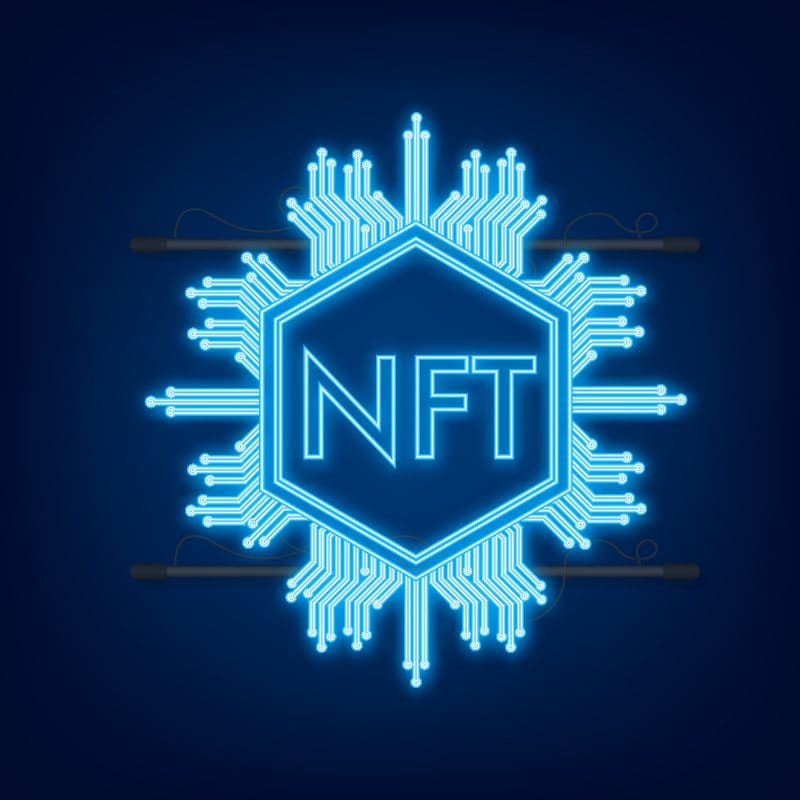NFT and gaming industries are both experiencing exponential growth.
Gaming is one of the most successful businesses of recent decades, undergoing successive years of double-digit expansion to reach a valuation of over $175 billion in 2021. NFTs offer the potential to level up on this impressive expansion even further!
Ever since the ERC-721 token standard first came to life in the CryptoKitties project nearly four years ago, there’s been significant buzz around the idea of NFTs having a gamification element and being used by games to level up the experience for collectors and players alike.
The burgeoning market for gaming NFTs
NFTs are breathing new life into segments such as immersive, collectible trading card games like Sorare. The French startup recently became the most well-funded project in crypto after completing a record $680 million raise for its fantasy sports NFT game, where unique cards featuring soccer stars change hands for as much as $290,000.
Splinterlands, a blockchain-based card game running cross-chain, with the game itself upon the Hive network, grew its user base by over 1,400% in July and August to reach 132,000 unique wallets.
Even cult British sci-fi series Doctor Who now has its own NFT-based trading card game.
Why NFT gaming is so appreciated
In these games, the benefit of NFTs is that, unlike their physical counterparts, NFT cards can’t be credibly copied, counterfeited, or destroyed, creating a market for a new generation of trading card enthusiasts. But NFTs are also making waves in games where the digital asset is a less integral part of play – games such as the massively popular Fortnite, which are free to play but generate revenue from selling in-game assets such as character skins, actions or access to special challenges.
These in-app purchases are big business, as was highlighted in the recent lawsuit between Fortnite developer Epic Games and Apple over the right to bypass the App Store (and cut Apple out of the asset sale earnings). Much of Epic’s estimated $30 billion is generated by those asset sales. However, from the user’s perspective, they never really own their assets, and the game operator can freeze their account at any time.
With NFT-based assets, the user can claim true ownership, transferring their purchases outside of the game or trading them on external markets. There are even decentralized finance protocols emerging that allow a user to stake their NFTs as collateral for loans.
Then there’s the still-nascent metaverse – a blockchain-enabled virtual world where users can do anything they can do in real life and more, even getting a virtual job and earning a salary in crypto. From real estate to attire, NFTs underpin each unique item in the metaverse.
A long road ahead
All this activity is indeed impressive. But one has to wonder – with so much potential evident from the beginning, why has it taken so long for NFTs to start gaining traction in the gaming sector? After all, the mania for Cryptokitties, NFT-based digital cats, clogged the Ethereum blockchain as far back as December 2017. What’s happened since then?
In fact, that exact incident illustrates one reason why game developers haven’t necessarily rushed to embrace NFTs. For much of the time since Cryptokitties emerged, blockchain has been lacking in truly scalable, decentralized infrastructure. Ethereum has long been the most popular and populated blockchain platform, but the high transaction fees and slow block time are off-putting. That is finally beginning to change, though, with the launch of more scalable layer 2 platforms such as Polygon removing a significant barrier.
However, a lack of infrastructure isn’t the only hurdle facing NFT adoption in gaming. Although blockchain games exist, as already mentioned, there’s still plenty of work to do to bridge the gap between mainstream games and NFTs. Most studios aren’t likely to have much expertise in blockchains and smart contract coding, and conversely, most smart contract developers are focused on function over form. It will take a lot more collaboration between the established gaming industry and the blockchain sector before NFTs can make real inroads.

Creating the right incentives
That collaboration also needs to focus on developing games that incorporate NFTs into the game strategy in a meaningful way. Using NFTs as the basis for in-game asset purchases is simple on a conceptual level, but injecting new value into the game changes the incentives. Creating a link between in-game success and real-world value, with assets being tradable and marketable, makes a game more likely to attract people who don’t necessarily want to play as much as they want to profit – so NFT-based games must ensure that the draw of incentives doesn’t deter those who are there for the love of the game.
Axie Infinity is one of the only games that has yet come close to achieving this balance, attracting users who wish to profit from the play-to-earn model without detracting from the gameplay. According to Dapp Radar, the Pokemon-style battle and trading game generated $355 million in revenue in August alone.
Finally, there’s a mountain to climb in bringing the broader community of gamers up to speed with NFTs, and making it as easy as possible for them to acquire, hold, and trade NFTs both in and out of the gaming environment. Within the cryptocurrency echo chamber, it is easy to forget that most of the world is still relatively unfamiliar with digital assets.
But for game developers who manage to offer a well-balanced combination of gameplay and income opportunities, along with security and user experience, the upside could be enormous. Just a few good games could be what it takes to entice the 2.9 billion-strong global audience of gamers past the tipping point and trigger an avalanche of adoption.
Author Bio
Stephanie So is an economist, policy analyst and co-founder of Geeq.
Throughout her career, she has applied technology within her specialist disciplines. In 2001, she was the first to use machine learning on social science data at the National Center for Supercomputing Applications.
More recently, she researched the use of distributed networking processes in healthcare and patient safety in her role as a Senior Lecturer at Vanderbilt University. Stephanie is a graduate of Princeton University (A.B.) and the University of Rochester (M.A., M.S., Ph.D.).
The post Is NFT gaming ready for the big league? appeared first on The Cryptonomist.




















